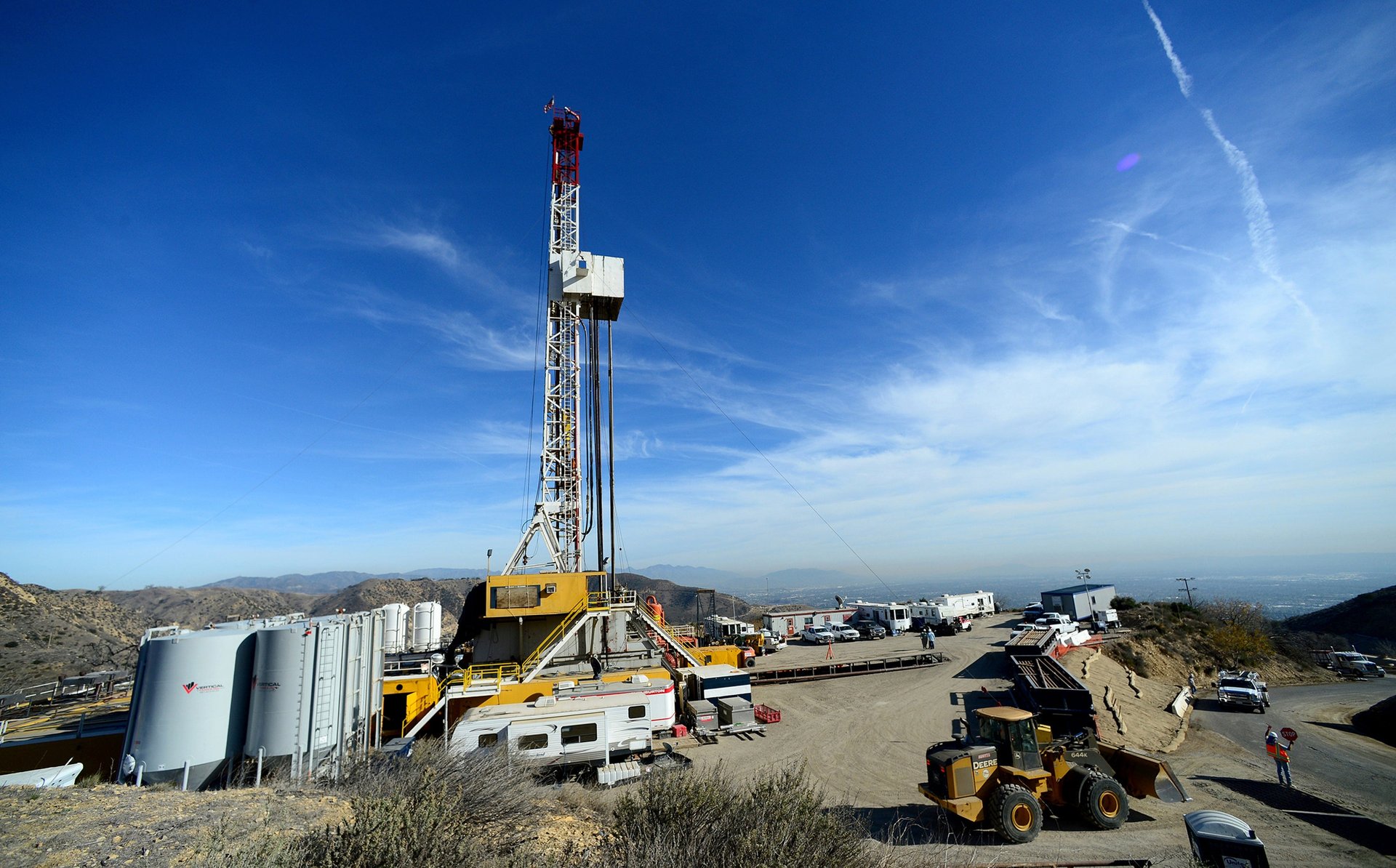California regulators approve more gas storage capacity at the site of the worst US methane leak
California regulators have approved a proposal to vastly increase natural gas storage at the site of the nation’s largest known methane leak

LOS ANGELES (AP) — California regulators on Thursday approved a controversial proposal to greatly increase storage capacity at the site of the nation's largest known methane leak, which sickened thousands of families and forced them from their Los Angeles homes in 2015.
Suggested Reading
Despite opposition from lawmakers and nearby residents, the California Public Utilities Commission voted 5-0 to permit underground storage of up to 68.6 billion cubic feet of gas at the vast Aliso Canyon field on the northern edge of Los Angeles County as a way to guard against fuel price spikes.
Related Content
That's more than a 50% increase over the current cap at the Aliso Canyon Natural Gas Facility, which is slated to be closed in 2027. It's also near the maximum capacity of 86 billion cubic feet but within safety standards set by another state agency.
“This vote is a slap in the face to the community members who have been living with the ongoing consequences of the worst gas blowout in American history,” Andrea Vega of the group Food & Water Watch said in a statement. “Aliso Canyon poses a significant danger to the health and safety of our communities and is entirely unnecessary to maintain California’s energy reliability.”
She accused the commission of siding with “irresponsible and greedy fossil fuel interests.”
The expanded storage was requested by Southern California Gas Co., which operates the facility, and was backed by the commission's staff. SoCalGas and San Diego Gas & Electric Co. said it would be better to buy natural gas during the summer and fall months when it's generally cheaper and store it for winter use.
The move “is a prudent step to advance our shared goal of maintaining energy reliability at just and reasonable rates,” SoCalGas spokesperson Chris Gilbride said in a statement.
The commission’s president, Alice Busching Reynolds, said the expansion was needed to keep gas bills affordable given the unpredictability of extreme weather events due in part to climate change, as well as the volatile wholesale natural gas market. She noted that California imports 90% of its natural gas from out of state.
She vowed that the commission will work toward weaning the region off the facility while the state transitions to cleaner energy.
“We will reduce our dependency on Aliso Canyon, but we also need to allow people, especially low income and vulnerable communities, to access affordable energy as we move to a new electrified economy,” she said before announcing her approval of the expansion.
The commission, which regulates and oversees gas, electric and other utilities, said the increase could save customers anywhere from $200 million to $450 million this winter.
The 2015 Aliso Canyon gas leak, which took four months to control, released more than 120,000 metric tons of methane and other gases into the atmosphere over communities in the San Fernando Valley.
Thousands of residents were forced to move out of their homes to escape a sulfurous stench and maladies including headaches, nausea and nose bleeds. SoCalGas and its parent company, Sempra Energy, agreed to pay up to $1.8 billion in settlements to more than 35,000 victims in 2021.
Earlier this month, the company reached another settlement with the utilities commission, agreeing to pay more than $70 million to the Aliso Canyon Recovery Account to address the impacts from the leak on air quality and public health.
Speakers at Thursday's commission meeting were uniformly opposed to permitting more storage.
“My mind is just blown that we’re actually talking about this again,” said Jane Fowler of the Granada Hills neighborhood and co-founder of the Aliso Moms Alliance. “We’re trying to get off fossil fuels for our future, for everyone’s future. Why would we be going backward?"
The commissioners were all appointed by Democratic Gov. Gavin Newsom, who has endorsed a plan to shut down the facility by 2027.
Democratic lawmakers were among opponents who argued that the field is a present danger and the state needs to move ahead more quickly to close it.
“Given the history of disaster and risks from continued operations at Aliso Canyon, I continue to support closing the facility on an expedited timeline,” U.S. Sen. Dianne Feinstein wrote in a letter to the commission’s president this month. “This proposed decision to increase capacity, however, appears to go in the opposition direction.”
The field, which stores gas in old wells, was at 50% capacity for years following the leak. But the commission started increasing its storage in 2020, saying it needed to ensure supplies of natural gas for the winter months. The volume is currently at 41.16 billion cubic feet.
Administrative Law Judge Zhen Zhang for the commission proposed allowing the increased storage capacity, noting that California and the West saw sharp spikes in the price of wholesale natural gas last winter that affected customers’ energy bills.
“On balance, as a matter of policy, it is prudent to take the conservative approach by protecting natural gas and electricity customers from reliability and economic impacts during the upcoming 2023-2024 winter,” the judge wrote.
In a letter signed by dozens of environmental organizations opposing the increase, activists said no shortages were reported in the two years after the blowout when Aliso Canyon was offline.
“This is an unnecessary danger to people,” said Issam Najm, an environmental engineer and resident of Los Angeles’ Porter Ranch suburb, where thousands of residents were sickened by the leak.
Each day the facility remains open, it is emitting cancer-causing chemicals including benzene, said Najm, citing reports by the South Coast Air Quality Management District, the regulatory agency monitoring air pollution in the area.
___
Watson reported from San Diego.
